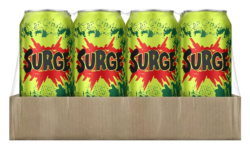The Retro Revolution: Nostalgia Marketing
In a world where everything has to be bigger, better and faster, nostalgia marketing takes us back to much simpler times, “the good ol’ days,” if you will. As the years continue to go by, we all develop a certain level of nostalgia for our younger days. The music we listened to, the movies we watched and the food we ate – all make us feel something.
Research shows that nostalgia helps give our lives a sense of meaning as we get older. Now, companies are beginning to recognize the value of using nostalgia in advertising to promise happy memories and comfort to their customers.
What is Nostalgia Marketing?
Nostalgia marketing is all about aligning your advertising campaign with things that provoke emotional responses about the past. It includes many pop culture references, music and imagery that helps tap into a person’s memories. It helps create a “remember when” feeling that can help your audience feel more connected to your brand.
Millennials specifically respond well to nostalgia marketing. Not only are they a fantastic group to target because they are currently the largest generation group in the U.S. with 7.2 million but, some of the older millennials are now in their mid-30s and are starting to settle down and “becoming your parents”, as Geico says. They are now reaching a point in life where they are becoming more nostalgic for simpler times to escape the many responsibilities that are now a part of their adult lives.
Associating your brand’s message with a positive reference from the ’80s or ’90s humanizes the brand and makes a meaningful connection with the past and present.
Why Does it Work?
In today’s digital age and social media, it is now easier than ever to connect through nostalgia which many companies use to leverage the optimistic feelings that often accompany walks down memory lane.
Research shows that Nostalgia can counteract boredom, loneliness, and anxiety. In fact, nostalgia can literally make a person feel warmer on a cooler day. Some studies have even suggested that it can be a way to cope with a difficult life transition. All of this shows that nostalgia marketing campaigns are not just a strategy for advertising, it is a psychological phenomenon. This is especially prevalent within this past year of lockdowns due to the rise of COVID-19. Recent studies have shown that many found comfort in old TV shows, films and songs from their youth.
Brands and Nostalgia
Along with today’s highly competitive market, nostalgia in advertising can bring older and newer brands to the same table. Some great examples include Coca-Cola who has long presented itself as a lover of nostalgia. In 2014, after they chose to discontinue its citrus-flavored drink “Surge,” fans came together to petition to demand the beverage be returned. Coca-Cola was happy to oblige and brought a limited supply of Surge back to the U.S., where it was sold exclusively on Amazon. This campaign was a success and helped generate loyalty among its fans.

Another great example is Spotify. In 2016, the music streaming service delivered “The Never Ending Story” nostalgia marketing campaign. The company behind the advertisement goes to the original actors for both characters to revive their roles. This video connected with their target audience, millennials, by combining the soundtrack from the movie in the advertisement; this campaign pushed Spotify sales and hit the nostalgic theme that left customers in awe.
Ultimately, some of the best marketing campaigns have an emotional connection to your audience. Nostalgia is an excellent way for brands to tap into their customer’s interests and emotions. We are all about bringing your brand to life and setting your business up for success.
Give us a call today for a Brand New Idea at 334.446.6149.
Posted: Oct 21, 2021
